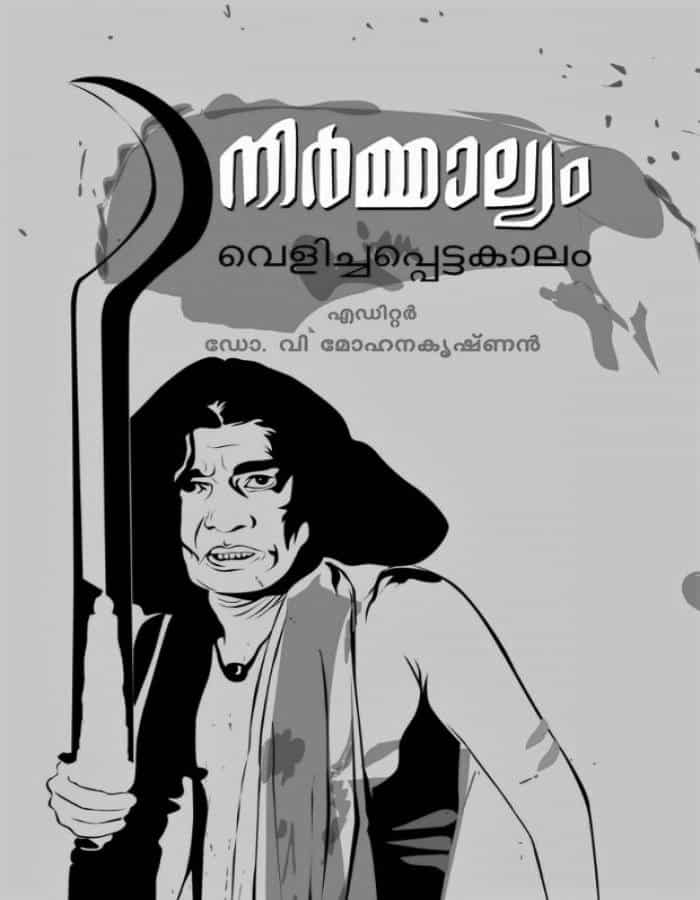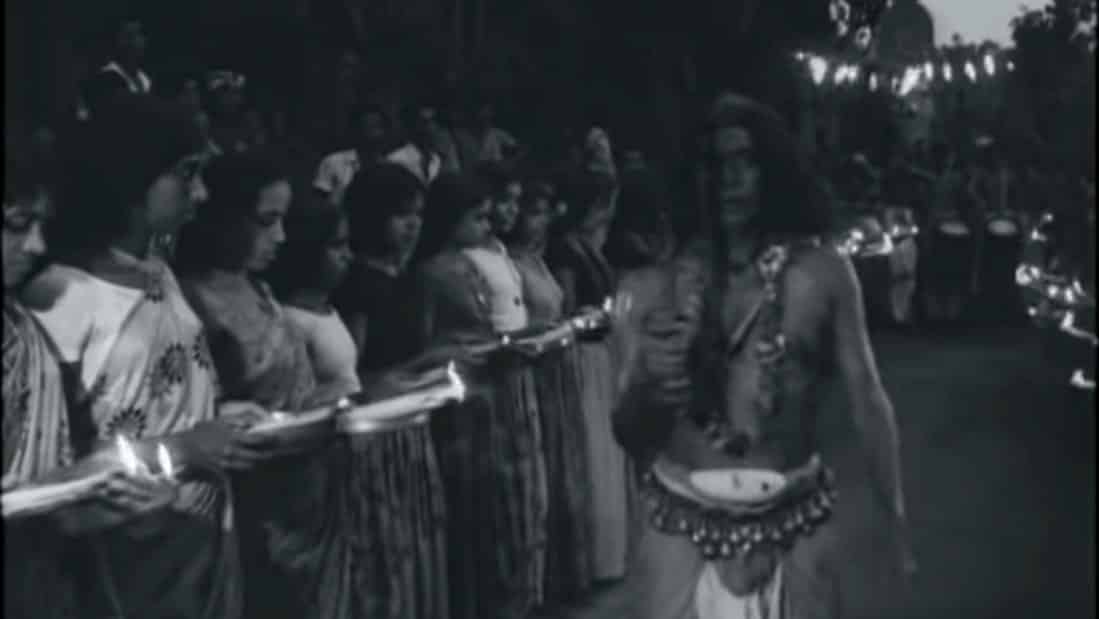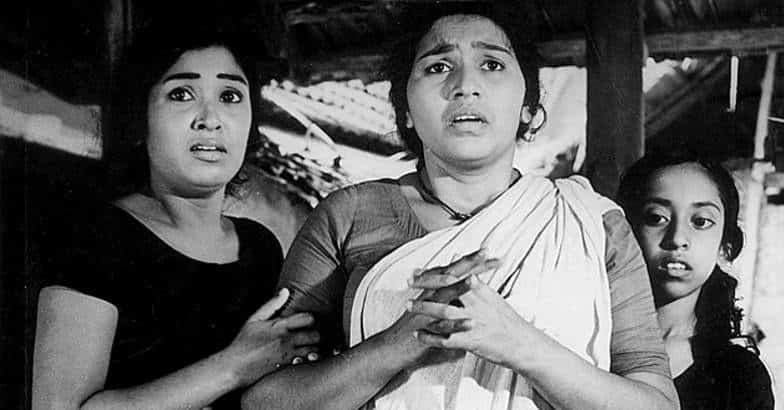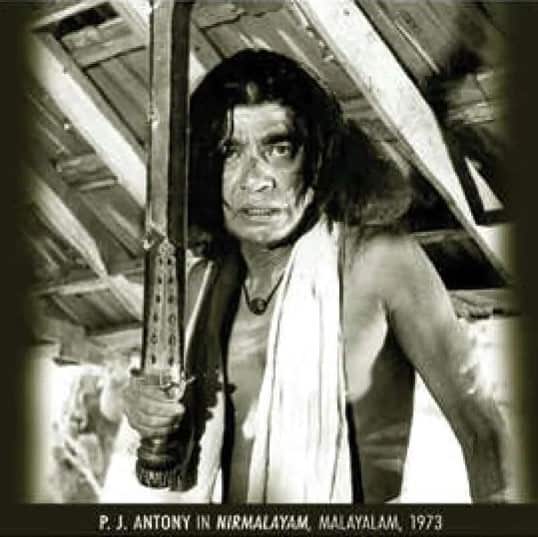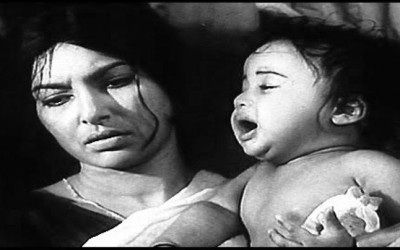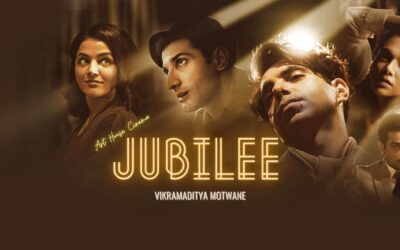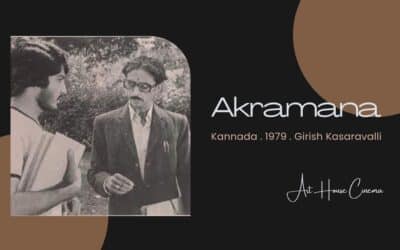Nirmalayam is a 1973 Malayalam film written and directed by M.T. Vasudevan Nair and has P.J. Antony and Kaviyoor Ponnamma as the main cast. An adaptation of the short story ‘Pallivalum Kalchilambum’, the film revolves around a temple and the lives of the people dependent on the temple. It went to win the National Awards for Best Feature Film and Kerala State Film Award for Best Feature Film in 1974 and is considered a landmark film in the Malayalam Cinema.
Cast
- P. J. Antony – Velichapad
- Kaviyoor Ponnamma – Narayani
- Sukumaran – Appu
- Sumithra – Ammini
- Ravi Menon – Brahmadattan Namboodari
- Kottarakkara Sreedharan Nair – Valiya Thamburan
- Sankaradi – Ravunni Nair
Crew
- Direction – M.T. Vasudevan Nair
- Story & Screenplay – M.T. Vasudevan Nair
- Music – K. Raghavan, M.B. Sreenivasan
- Cinematography – Ramachandra Babu
- Editing – Ravi
Nirmalayam (1973) Film Poster
Story
Nirmalyam revolves around the life of a ‘Velichappadu’ in a village temple. ‘Velichappadu’ is the vernacular title bestowed on the oracle who acts as the mediator between the local deity and the devotees of a temple. The title is earned by familial inheritance and is also a means of livelihood. The custom of having a Velichappadu associated with a temple is prevalent in the Valluvanad region of Kerala. The Velichappadu is believed to get possessed by the deity during rituals and so enters a state of trance marked by frenzied dance like movements. While possessed, a Velichappadu may cut his own forehead with his sword, offering blood to the deity as a symbol of absolute faith. The devotees respect him and heed his words in trance as the deity’s edicts. The heavy sickle shaped sword, anklets and a waist belt studded with bells that form the Velichappadu’s ensemble are usually venerated heirlooms that had been passed down through generations in the family.
The protagonist of Nirmalyam is the impoverished Velichappadu of a village temple. His wife Narayani, elderly father, son Appu, elder daughter Ammini and two younger daughters are dependent on him. The meager occasional remuneration from the rundown temple is the devout Velichappadu’s sole income. Appu is in desperate pursuit of a job to save them from poverty. The temple being neglected by the owner and devotees is suffering from a lack of earnings. The priest quits his job to start a tea stall. The newly appointed priest Unni Namboothiri is another unemployed youth who aspires for a Government job. He resorts to the interim occupation as a priest due to the impoverished state of his household. One day, Velichappadu sees Appu trying to sell his revered ensemble- the sword and the anklets to a local vendor who sells bronze cookware. The infuriated Velichappadu slaps his son and ousts him. Appu leaves the village and does not return.
Unni Namboothiri and Ammini grow close. They are realistic and do not have high hopes about the future of their relationship. Yet, the duo makes the most of their courtship. Eventually, the pair parts amicably when Unni Namboothiri returns to commit to a marriage arranged by his family.
The onslaught of smallpox in the village is inferred by the residents as the wrath of the Goddess. Appeasing the Goddess by performing the expensive Kuruthi ritual is the sole remedy. The Velichappadu and the villagers request Valiya Thirumeni, the wealthy owner of the temple property to fund the ritual, but his response is not in their favor. Eventually, the devotees join hands to organize the Kuruthi.
On the day of the Kuruthi ritual, Velichappadu unexpectedly turns up at his home to fetch his ensemble. He runs into his wife Narayani and the merchant Maimunni in a compromising situation. It shocks the Velichappadu that Narayani had to repay their debts to Maimunni by offering herself. Distraught and shaken, he staggers back to the temple.
Once involved in the festivities at the temple, the Velichappadu regains his fervor and does his part as the possessed oracle. The devotees believe him to be possessed by the Goddess. At the height of his trance, he strikes his forehead repeatedly with the sword and sprints into the inner sanctum. Blood pouring down his face and still in the gusto of his frenzied movements, the Velichappadu forcefully spits a mouthful of blood at the deity’s face and collapses. When devotees become aware of the situation, the Velichappadu is no more. The climax scene of the movie shows the Velichappadu’s blood flowing down the stone floor where the previous day’s offerings to the Goddess (Nirmalyam) lay scattered.
Author’s Notes
Jnanpith laureate M.T. Vasudevan Nair (M.T) is the blessing and pride of Malayalam Cinema. A leading presence in Malayalam Literature, M.T has enriched Malayalam Cinema with exceptional screenplays. Murapennu (1965) marked his entry into Malayalam film industry as a screenplay writer, while Nirmalyam (1973) was his directorial debut. The exceptional theme and unique picturization makes Nirmalyam stand out as the masterpiece among the movies directed by M.T.
The screenplay of Nirmalyam evolved from ‘Pallivalum Kalchilambum’, a gripping short story by M.T himself. Yet, the movie does not take after the story apart from the similarity in theme, ambience and a few characters. In Nirmalyam, the plot has been enhanced and elevated into a higher realm of emotional intensity. Nirmalyam was conceived in the early seventies; a golden age marked by intellectual progress, revolutionary ideas and new schools of thought. As a directorial debut, the movie was a bold venture. The audience could also rise above the constraints of religion based fundamentalism, communal rivalry and racial bigotry to appreciate the movie in all its virtue. The scene where P.J. Antony spits at the idol of the Goddess in the sanctum sanctorum of a Hindu temple was perceived in its true sense, as the integral ingredient of a work of art. The movie is celebrated and cherished as a classic by the audience and critics alike. The culture, traditions, social and societal facets of an epoch lives through Nirmalyam.
The title of the movie is derived from the Malayalam word ‘Nirmalyam’ that denotes the remains (especially flowers) of previous day’s offerings to the deity in a Hindu temple. The fresh flowers hailed in connection with the deity on a day are discarded as withered rejects the next day. The title is a metaphor of the lives portrayed in the movie. Characters and elements in the movie hint at being rejects or misfits in the present and revel in the splendor of yesteryears. A fanatic follower of an ancient religious tradition in the age of dwindling faith, the protagonist himself is a castoff from a glorious past.
The plot and characterization of Nirmalyam present three perspectives. The viewer can delve into the depths of its nuances from the standpoints of tradition, culture, and society. Faith in the Goddess dominates the mindset of Velichappadu and the elderly of the village. They are captives of traditions and blind faith that cannot cope with the changing times. When Velichappadu’s son tries to sell the sword and anklets that are symbols of his belief, his faith is challenged. He is unable to cope with his son’s act of defiance in treating the revered family heirlooms like mere bronzeware.
Nirmalyam talks about a period when the traditional arts such as Kathakali and thullal came out of the confines of religious beliefs and temples. The profane and inevitable commercialization of traditional art forms is also revealed through Valiya Thirumeni, the lord of the manor that owns the temple. Under the pretext of being a patron of traditional arts, he comprises the art forms through made-to-order versions of Kathakali and Mohiniyattom, to serve as commodities in the tourism market. Valiya Thirumeni offers a stark contrast to the Velichappadu who selflessly upholds the beliefs and rituals that form the cultural heritage of a society.
Nirmalyam showcases an era of social and economic changes that revolutionized society. Unni Namboothiri is a victim of the land reform Act that led to many families losing their landed property. Narayani is a helpless, but practical and devoted homemaker who shoulders the responsibility of a household all alone. She forfeits her virtue to save her family from starvation. Her husband, the Velichappadu is obsessed with his faith in the temple and totally oblivious of their plight and the mounting debt. When Velichappadu accuses Narayani of betrayal, she furiously retorts that her downfall was brought about by her husband’s blind faith in the Goddess. Her statement that no Goddess ever brought her rice when her kids were starving shatters him.
Nirmalyam holds that faith seldom comes to the rescue of an ailing man. The multitude of grievances and misery in a society that practices stoic faith underlies the plot. When the temple owner and the priests had given up their faith in the Goddess for better prospects, the Velichappadu had unperturbedly worked for the uplift of the temple. The Goddess’s apathy towards the poverty and sufferings of her staunch devotee even at the lowest ebb of his life forms the highlight of the questions that Velichappadu’s wife hurls at him.
Angered at his wife’s adultery, yet aware of her plight, remorseful, and utterly helpless, his introspection shakes Velichappadu to the core. While in the throes of schooled motions proclaiming faith, his tumultuous mind undergoes a sea change. His absolute faith in the Goddess gives way to intense contempt and rage prompting him to spit at her idol with all his might. This final act of sacrilege reveals in all its intensity, the hatred and disgust he feels against the power that left him a dire fate despite a lifetime of devotion.
The visuals incorporated by M.T in Nirmalyam amount to powerful social criticism. The Velichappadu’s younger daughter- a little girl who lives at the brink of starvation is seen reading a school lesson describing affluent childhood wherein a child looks upon drinking milk just as a way to please the mother. The black humor spun by the stark contrast of the girl’s plight and her recite in the backdrop of childish innocence is painfully captivating.
P.J. Antony, the gifted performer transformed into the Velichappadu on screen. An actor with extensive experience in theatre, he portrayed the unique character with apparent ease. His role in Nirmalyam earned him the Bharath Award in 1974. He is the first actor in Malayalam cinema to receive this honor. P.J. Antony’s portrayal of Velichappadu is timelessly lauded as a benchmark.
Image Left: P.J. Anthony as Velichapad in Nirmalayam (1973). Source: NFAI
Nirmalyam bagged the National Film Award for Best Feature Film in 1973. P.J. Antony received the National Film Award for Best Actor for his outstanding performance as the Velichappadu. The movie bagged the Kerala State Awards for the Best Film, Director, Screenplay, Actor, Music, and Editing. Nirmalyam also won the award for the best film in the International Film Festival held in Jakarta.
Awards & Recognition
- National Film Award for Best Feature Film (1973)
- Kerala State Film Award for Best Feature Film (1973)
- National Film Award for Best Actor – P.J. Antony (1973)
- Kerala State Film Award for Best Editor – Ravi (1973)
- Kerala State Film Award for Best Dialogues (1973)
Reference
- Hundred Years, 100 Movies, Author: Madhu Eravankara , Translation: Hema Mohandas
- Wikipedia – Nirmalayam
- IMDB – Nirmalayam (1973)
- DFF Archives – National Film Awards
Nirmalayalam On YouTube
About The Translator
AHC Notes
The contents are contributed to Arthouse cinema from ‘110 years 110 films’, a proposed book project in English by Dinesh Kumar S Nair in association with Madhu Eravangara to commemorate Indian cinema’s 110th year of inception.



